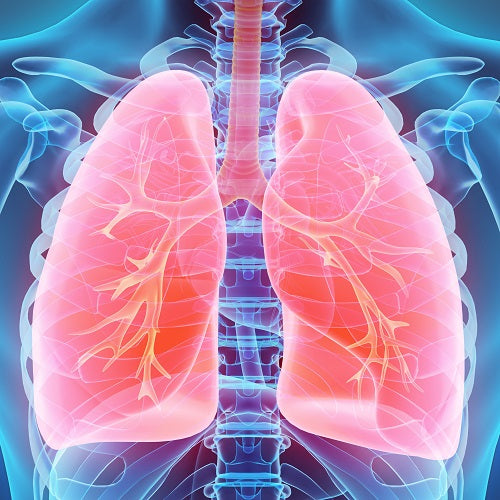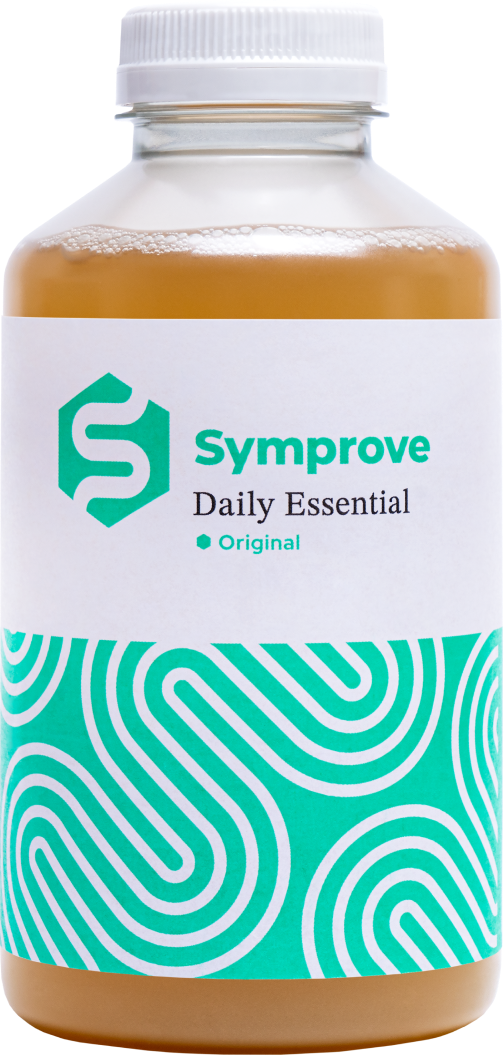Introduction
The United Kingdom has the highest mortality rates from respiratory disease in Europe. Despite improvements in health outcomes over the last decade, these have not kept pace with other chronic health conditions (1, 2). Although the COVID-19 pandemic accelerated changes in healthcare delivery models and highlighted the importance of respiratory research.
The gut and respiratory tract are part of a shared bi-directional microbial and immune communication termed the gut–lung axis (3). The gut and lung microbiome are thought to influence immune responses locally and at distant sites, with gut and lung dysbiosis observed in a range of respiratory diseases; however it is unclear whether this is a cause or effect of the disease (3, 4, 5).
Whilst understanding of how the gut and lungs communication is in its infancy, research in animal models has recently identified that the gut microbiome directs the migration of innate lymphoid cells (ILCs) from the gut to the lung (6). More specifically, group 2 (ILC2s) are abundant in the mucosal surface of both the gut and lung. ILCs play a critical role in immune system regulation, preventing bacterial infections and maintaining lung homeostasis (7).
Further insight into the gut-lung axis and how communication occurs between these two organs has the potential to broaden potential treatment options beyond standard medical management to include gut microbiome targeted therapies in those with respiratory disease.
The Gut-Lung Axis in Respiratory Diseases
Asthma
Asthma is a chronic lung condition caused by inflammation and muscle tightening around the airways and is the most common chronic disease in children (8). It has been found that gut microbiome changes in infants can contribute to the development of asthma (3, 9). More specifically, infants with lower microbial diversity during the first month of life was associated with an increased risk of developing asthma (10). Gut microbiome dysbiosis and the resulting influence on immune responses can affect the clinical characteristics of asthma and treatment response (4).
In recent years, probiotics have been studied as a potential treatment option in patients with asthma. For example, a randomised controlled trial (RCT) including 160 children aged 6-18 years old found that probiotic supplementation for 3 months reduced asthma severity and improved control (11). Furthermore, a recent meta-analysis of 10 RCTs found that probiotics may help improve lung inflammation, asthmatic symptoms, and reduce the number of asthma attacks (12). Gut microbiome-targeted interventions may be a way to prevent and treat asthma, however further research is needed to assess which specific strains, dose and duration are optimal for a clinically meaningful benefit (9).
Chronic Obstructive Pulmonary Disease (COPD)
COPD is described as a progressive decline in lung function caused by chronic inflammation and airway obstruction and is a result of a group of lung conditions, including emphysema and chronic bronchitis (13). Studies that have looked at the lung microbiome in those with COPD have found a positive correlation between the number of pathogenic microbes and disease severity, and a negative correlation with microbiome diversity (14, 15, 16, 17). In addition, it gastrointestinal conditions (such as inflammatory bowel disease) are more common in those with COPD (18, 19). Furthermore, systemic hypoxia and oxidative stress may also be involved in intestinal dysfunction (18). Animal studies exploring probiotic administration in COPD found reductions in airway inflammation and alveolar damage, alongside increases in anti-inflammatory cytokines (20, 21). Further research is needed that shows us whether therapeutics that target the gut-lung axis may be helpful for those with COPD.
Cystic Fibrosis
Cystic fibrosis (CF) is a genetic disease caused by mutations in the cystic fibrosis transmembrane conductance regulator (CFTR) gene (22). This mutation effects multiple body systems including the gut and the lung (9). One small cohort study of patients with CF linked specific gut microbiome configurations to the number of airway exacerbations (5). Further studies in patients with CF have consistently showed lower gut microbiome diversity and abundance (23). Recent Cochrane reviews have investigated whether targeting gut microbial dysbiosis and related inflammation may be an effective approach for those with CF (22, 24). For example, one review of 12 RCTs found that probiotics may reduce the number of pulmonary exacerbations during a 4–12-month period and significantly reduced faecal calprotectin, though the clinical significance of this is unclear (22). Further research with longer intervention periods is required. It has been shown that prebiotic supplementation may help to prevent respiratory tract infections, particularly in children. However, at present there are no studies of prebiotic supplementation in adults with CF (24, 25).
COVID-19
COVID-19 is a respiratory disease, though gastrointestinal symptoms are a common manifestation (26, 27). A recent systematic review that looked at 27 studies found that gut microbiome dysbiosis was evident in those who currently had COVID- 19. This persisted even in those that had recovered (28). Furthermore, a meta-analysis that investigated the links between the respiratory and gut microbiome found lower gut microbiome diversity but not lung microbiome diversity (29). In addition, the composition of the gut microbiome has been linked to severity of COVID-19 (30, 31). As a result, studies have been exploring whether probiotics can improve clinical outcomes in those with COVID- 19. A recent systematic review and meta-analysis that looked at 18 studies (11 RCTs and 7 observational) found that probiotics reduced the length of the hospital stay, reduced mortality and improved recovery time, although it had no effect on reducing the incidence of COVID-19 when used prophylactically (32).
Summary
While the gut lung axis is not yet fully understood, evidence of probiotics and prebiotics is growing in a number of respiratory diseases. In the future, these may be considered new therapeutics to support clinical practice. At present, current dietary advice for those with respiratory diseases include eating a healthy balanced diet and maintaining a healthy weight.
References
1. England PH. Respiratory Disease: Applying All Our Health 2022 [Available from: https://www.gov.uk/government/publications/respiratory-disease-applying-all-our-health/respiratory-disease-applying-all-our-health.
2. Salciccioli JD, et al. BMJ 2018;363:k4680.
3. Budden KF, et al. Nat Rev Microbiol. 2017;15(1):55-63.
4. Barcik W, et al. Immunity 2020;52(2):241-55.
5. Hoen AG, et al. J Pediatr. 2015;167(1):138-47.e1-3.
6. Pu Q, et al. J Immunol. 2021;207(1):257-67.
7. Haldar S, et al. FEMS Microbiol Ecol. 2023;99(10).
8. Organisation WH. Asthma. 2023.
9. Chunxi L, et al. J Immunol Res. 2020:2340670.
10. Abrahamsson TR, et al. Clin Exp Allergy. 2014;44(6):842-50.
11. Huang CF, et al. Nutrients. 2018;10(11).
12. Xie Q, et al. Nutr Hosp. 2023;40(4):829-38.
13. Wang Y, et al. Int J Chron Obstruct Pulmon Dis. 2018;13:3341-8.
14. Yu S, et al. Microbiol Res. 2023;266:127244.
15. Garcia-Nuñez M, et al. J Clin Microbiol. 2014;52(12):4217-23.
16. Chiu YC, et al. PLoS One. 2021;16(4):e0249944.
17. Bowerman KL, et al. Nat Commun. 2020;11(1):5886.
18. Wang L, et al. Am J Respir Crit Care Med. 2023;207(9):1145-60.
19. Brassard P, et al. Eur Respir J. 2015;45(4):962-8.
20. Verheijden. Treatment with specific prebiotics or probiotics prevents the development of lung emphysema in a mouse model of COPD. 2011.
21. Carvalho JL, et al. PLoS One. 2020;15(4):e0225560.
22. Coffey MJ, et al. Cochrane Database Syst Rev. 2020;1(1):Cd012949.
23. Li L, et al. Clin Nutr. 2014;33(4):571-80.
24. Williams NC, et al. Cochrane Database Syst Rev. 2023;9(9):Cd015236.
25. Williams LM, et al. Adv Nutr. 2022;13(1):167-92.
26. He KY, et al. Front Microbiol. 2023;14:1278479.
27. Martín Giménez VM, et al. Int J Mol Sci. 2023;24(15).
28. Simadibrata DM, et al. J Dig Dis. 2023;24(4):244-61.
29. Reuben RC, et al. Front Cell Infect Microbiol. 2023;13:1211348.
30. Yeoh YK, et al. Gut. 2021;70(4):698-706.
31. Lymberopoulos E, et al. Front Cell Infect Microbiol. 2022;12:963338.
32. Sohail A, et al. Front Nutr. 2023;10:1274122.



